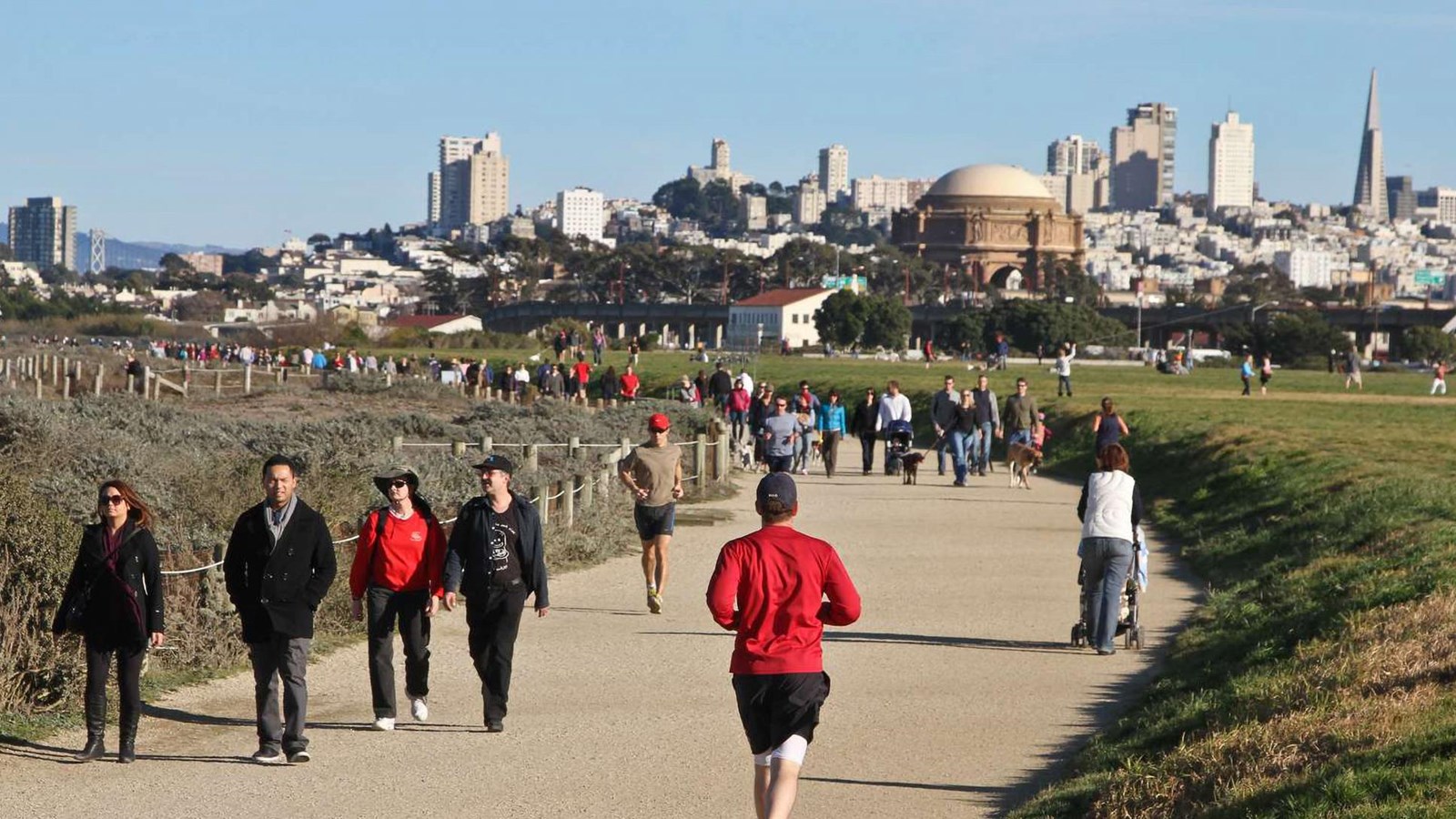Last updated: August 29, 2025
Place
Crissy Field

Scenic View/Photo Spot
Crissy Field is a stunning place to walk or bike along a flat, hard-packed promenade with iconic views of the San Francisco Bay and Golden Gate Bridge. Yessir, Crissy Field has it all. Beaches, picnic spots, scenic overlooks and renowned conditions for windsurfing. Dog friends welcome!
From Seasonal Village to Pioneer Airfield
The Ohlone: Coastal Native Peoples
The Ohlone people lived in and around the vicinity of Crissy Field by 740 AD. They and their predecessors lived in seasonal villages that could be moved to accommodate migratory hunting, fishing and foraging practices. Crissy Field was one such seasonal site. The Ohlone's way of life remained largely unchanged for 10,000 years, until the late 18th century and the arrival of European colonists.
The Spanish arrived next, establishing a territorial presence alongside the Ohlone. They quickly adopted tactics to assimilate and systematically destroy the Ohlone culture and way of life. Yet the Ohlone continue to endure. The descendants of this pre-European society are still in the bay area, working to preserve and revitalize their culture. Revitalization happens in many ways, including language restoration, protection of ancestral sites and cultural revitalization through song, dance, storytelling and other traditional arts.
The Military at Crissy Field
This area was an anchorage for ships that supplied the Presidio soldiers during the Spanish, Mexican and US Army periods. After the US Army arrived, soldiers built stables, warehouses and refuse dumps in these damp lowlands. In the 1870s, the US Lifesaving Service (Coast Guard) Station opened at the west end of Crissy Field. The army always desired to fill the tidal sloughs to make the area more suitable for military activities.
Swamp to barracks via the 1915 Panama Pacific International Exposition
With a stroke of luck, the opportunity finally came with the 1915 Panama Pacific International Exposition, when the city filled the marsh for the army. During the Exposition, this area housed state and international pavilions at the east end. The west end had livestock show areas and an automobile racetrack. After the fair closed and World War I commenced, barracks for 6,000 soldiers training at the Presidio covered the Crissy Field area. After the war in 1919, construction of the airfield began where the old racetrack stood.
From Post to Park
In the World War II period, temporary barracks were again built along Crissy Field and stood here until the Army turned the Presidio over to the National Park Service in 1994. By that time, the area was showing signs of neglect and had an industrial feel. Restoration of the area began and continues today.
Restoration in the 21st Century
At the tail end of the 20th century, the focus on Crissy Field turned to restoration. A 1994 National Park Service management plan made a commitment to preserving the area as a place for relaxing, where visitors could experience solitude and enjoy a natural refuge in an urban setting, dedicated to the protection of cultural and natural resources. The first major initiative was the restoration of both the historic airfield and wetlands at Crissy Field. In consultation with the Ohlone, efforts to plant native vegetation have proven successful. The tidal marsh re-opened in 2000 and is now home to countless birds, jack smelt, bay shrimp and crabs.
Protecting Snowy Plovers
Look for the small, shy Western Snowy Plover (Charadrius alexandrinus nivosus) - a threatened species that rests here in the winter. In California, there has been a significant decline in breeding locations as a result of various forms of human disturbance. The species is being strictly monitored and protected by the National Park Service. For more details see the Superintendent's Compendium and Exhibits (maps) on the Laws & Policies webpage and the 2008 Special Regulation codified at 36 CFR 7.97(d).
Crissy Field Wildlife Protection Area
Dogs must be restrained on a leash not more than six feet in length starting July 1 and ending May 15, in the Crissy Field Snowy Plover Protection Area. Dog walking restricted to on-leash only in the area encompassing the shoreline and beach north of the Crissy Field Promenade (excluding the paved parking area, sidewalks and grass lawn of the former Coast Guard Station complex) that stretches east from the Torpedo Wharf to approximately 700 feet east of the former Coast Guard station, and all tidelands and submerged lands to 100 yards offshore.
Climate Change, Rising Seas
Burning fossil fuels like coal and gas releases carbon dioxide, which acts like a heat-trapping blanket around the planet, disrupting the climate. As glaciers melt and sea temperatures rise, so does sea level.
Rising seas, coupled with bigger storms and waves, are causing more flooding and erosion of low lying areas like the one here, and could affect how sand is distributed along the beach. These trends may cause future visitors to have a very different beach experience here.
A display at the bridge over Crissy Field marsh shows possible future sea levels, caused by global warming. The rate of sea level rise can be slowed by reducing carbon dioxide emissions.
